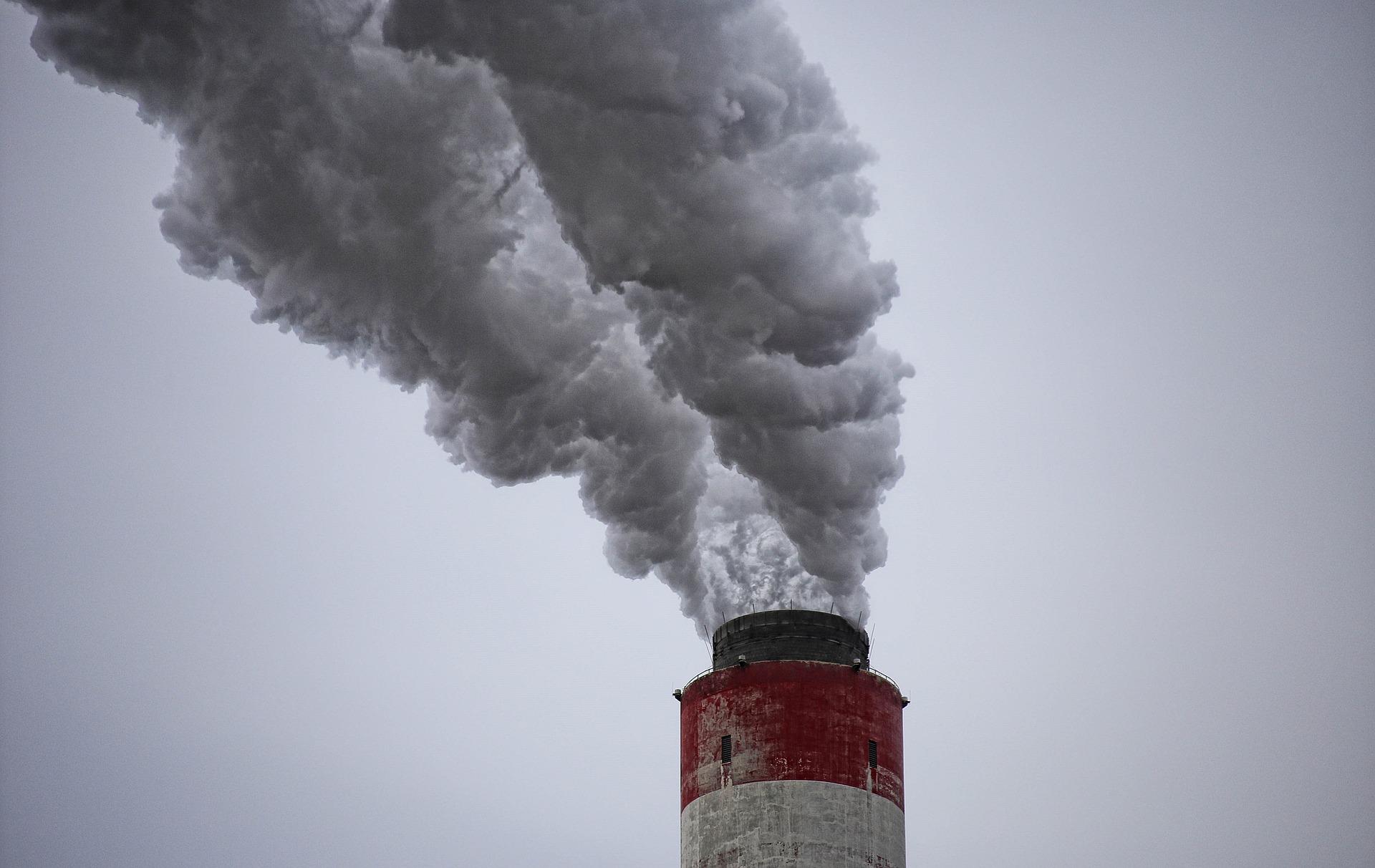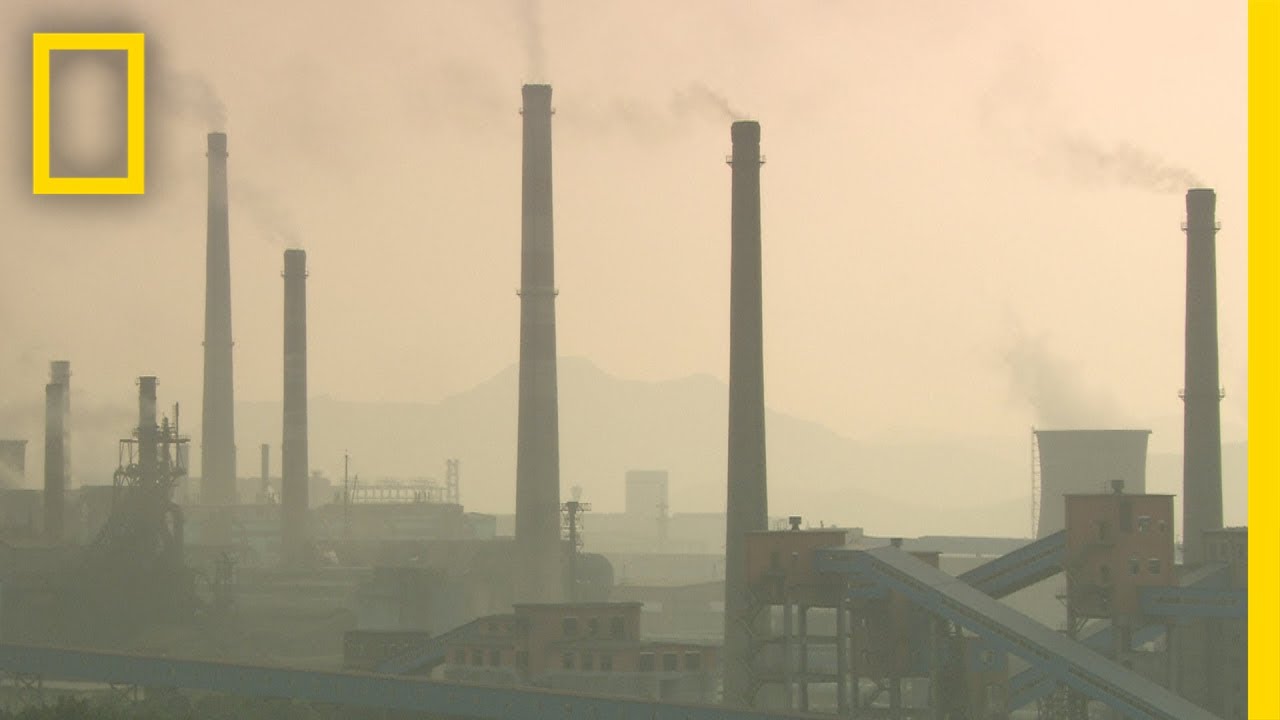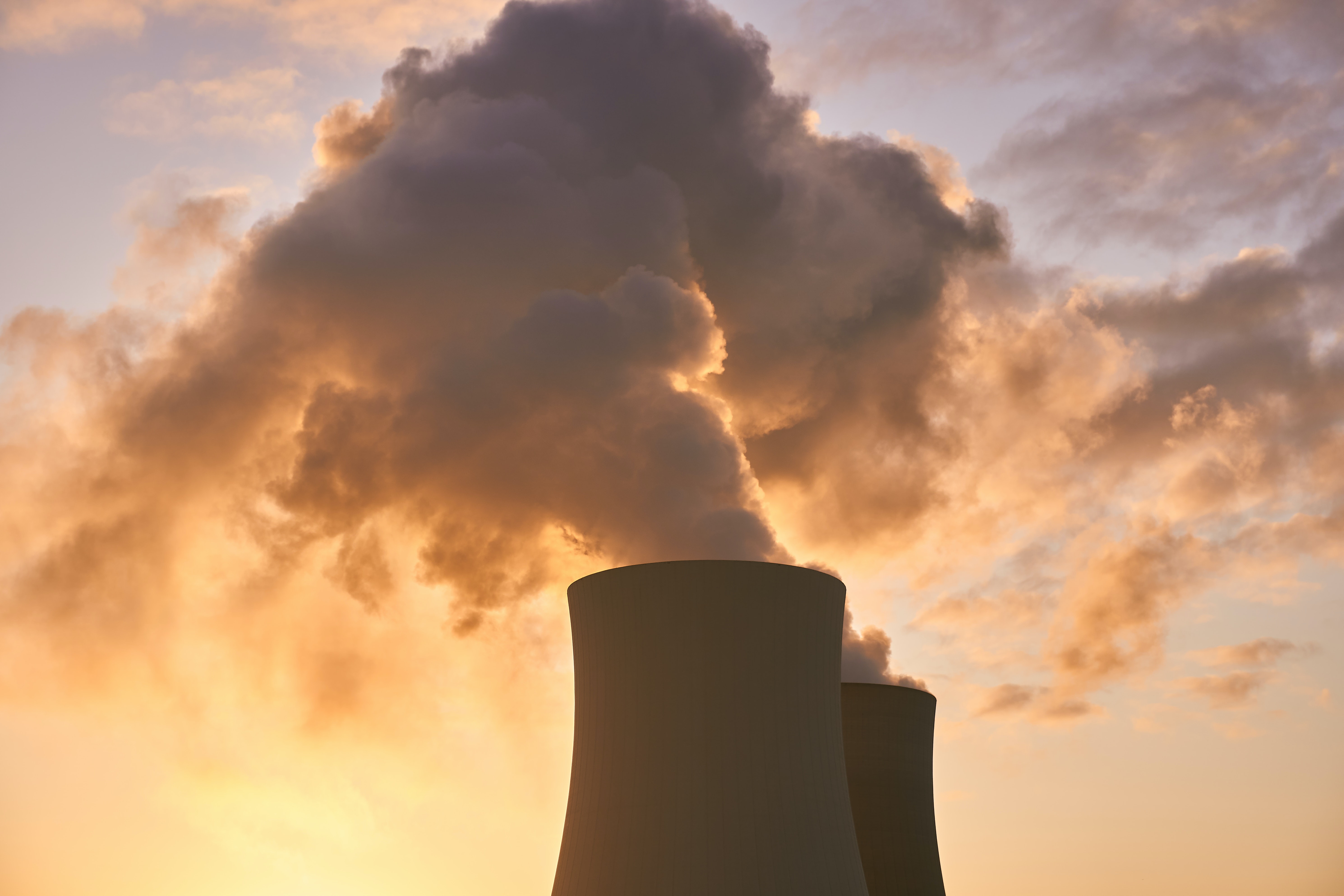Air Pollution - The Environmental And Health Impacts
Air pollution is one of the most serious problems of our time, not only because of its effect on climate change, but also because of its impact on public and individual health as a result of rising morbidity and mortality. Many pollutants are significant contributors to human disease. Particulate Matter (PM), which consists of particles of varying but very small diameter, enters the respiratory system through inhalation and causes respiratory and cardiovascular diseases, reproductive and central nervous system dysfunctions, and cancer.
Author:Suleman ShahReviewer:Han JuMay 22, 2022226 Shares3K Views

Air pollution- Air pollution is one of the most serious problems of our time, not only because of its effect on climate change, but also because of its impact on public and individual healthas a result of rising morbidity and mortality. Many pollutants are significant contributors to human disease. Particulate Matter (PM), which consists of particles of varying but very small diameter, enters the respiratory system through inhalation and causes respiratory and cardiovascular diseases, reproductive and central nervous system dysfunctions, and cancer. Although ozone in the stratosphere protects against ultraviolet irradiation, it is harmful at ground level, affecting the respiratory and cardiovascular systems.
Climate change, as well as natural disasters, have an impact on the geographic distribution of many infectious diseases. Only public awareness combined with a multidisciplinary approach by scientific experts can address this problem; national and international organizations must address the emergence of this threat and propose long-term solutions.
An Approach To The Problem
Because multiple human activities influence the environment, the interactions between humans and their physical surroundings have been extensively studied. The biotic (living organisms and microorganisms) and abiotic (hydrosphere, lithosphere, and atmosphere) components of the environment are intertwined.
Pollution is the introduction of substances into the environment that are harmful to humans and other living organisms. Pollutants are harmful solids, liquids, or gases produced in higher-than-normal concentrations that degrade our environment's quality.
Human activities pollute the water we drink, the air we breathe, and the soil in which plants grow. Although the industrial revolution was a huge success in termsof technology, society, and the provision of a wide range of services, it also resulted in massive amounts of pollutants being released into the air that are harmful to human health. Global environmental pollution is, without a doubt, a multifaceted international public health issue. This major issue is linked to social, economic, and legal concerns, as well as lifestyle habits.
All of the aforementioned are linked to climate change, and the consequences for humanity could be dire if the situation worsens. Climate change and the effects of global planetary warming have serious consequences for multiple ecosystems, including food safety concerns, ice and iceberg melting, animal extinction, and plant damage.

Air Pollution 101 | National Geographic
Sources Of Exposure
Air pollutants are classified according to their sources of pollution. As a result, according to the classification system, the four main sources should be mentioned: Major sources, Area sources, Mobile sources, and Natural sources.
The chemical and fertilizer industries, metallurgical and other industrial plants, and municipal incineration are all major sources of pollution.
Domestic cleaning services, dry cleaners, printing shops, and gas stations are all indoor sources.
Automobiles, cars, trains, airplanes, and other types of vehicles are examples of mobile sources.
Physical disasters such as forest fires, volcanic erosion, dust storms, and agricultural burning are among the natural sources.
Air Pollutants
Particle pollution, ground-level ozone, carbon monoxide, sulfur oxides, nitrogen oxides, and lead are all reported by the World Health Organization (WHO). All aspects of the environment, including groundwater, soil, and air, can be harmed by air pollution.
Particulate Matter (PM)
Short-term (acute) or long-term (chronic) PM exposure has been linked to negative health effects.
Particulate matter is produced in the atmosphere as a result of chemical reactions between pollutants. Particle penetration is highly influenced by their size. The US Environmental Protection Agency coined the phrase "particulate matter" to describe particles. Particulate matter pollution includes particles with a diameter of 10 micrometers (m) or less, known as PM10, and extremely fine particles with a diameter of 2.5 micrometers (m) or less, known as PM2.5.
Ozone
Ozone (O3) is a gas that is created when oxygen is exposed to a high-voltage electric discharge. It's a powerful oxidant that's 52% more powerful than chlorine. It forms in the stratosphere, but it may also form in the troposphere as a result of photochemical smog chain reactions.
Ozone has the ability to travel long distances from its source, moving with air masses. Surprisingly, ozone levels over cities are low, despite rising levels in urban areas, which could be harmful to cultures, forests, and vegetation by reducing carbon assimilation.
Carbon Monoxide (CO)
When fossil fuel combustion is incomplete, carbon monoxide is released. Headaches, dizziness, weakness, nausea, vomiting, and loss of consciousness are some of the signs and symptoms of carbon monoxide poisoning.
Carbon monoxide has a much higher affinity for hemoglobin than oxygen. People who are exposed to high levels of carbon monoxide for an extended period of time may experience serious poisoning. Hypoxia, ischemia, and cardiovascular diseaseare all symptoms of oxygen loss caused by the competitive binding of carbon monoxide.
Nitrogen Oxide (NO2)
Because it is emitted by automobile engines, nitrogen oxide is a traffic-related pollutant. When inhaled at high levels, it irritates the respiratory system, causing coughing, wheezing, dyspnea, bronchospasm, and even pulmonary edema. Humans appear to be affected by concentrations greater than 0.2 ppm, while concentrations greater than 2.0 ppm affect T-lymphocytes, particularly CD8+ cells and NK cells, which produce our immune response.
Sulfur Dioxide (SO2)
Sulfur dioxide is a harmful gas that is emitted mainly from fossil fuel consumption or industrial activities. The annual standard for SO2 is 0.03 ppm. Humans, animals, and plants are all affected by it. Those with lung disease, the elderly, and children are particularly vulnerable, as they are at a higher risk of harm. Sulfur dioxide is a sensory irritant that penetrates deep into the lungs and converts to bisulfite, causing bronchoconstriction. Additionally, skin redness, eye and mucous membrane damage, and worsening of pre-existing cardiovascular disease have all been reported.
Lead
Lead is a heavy metal that is emitted from some gasoline motor engines, batteries, radiators, waste incinerators, and waste waters in various industrial plants.
Furthermore, metals, ore, and piston-engine aircraft are major sources of lead pollution in the air. Lead poisoning poses a public health threat because of its negative effects on humans, animals, and the environment, particularly in developing countries.
Lead poisoning can be caused by inhalation, ingestion, or dermal absorption. Lead poisoning causes edema (brain swelling) in the fetal nervous system. Lead accumulates in the blood, soft tissue, liver, lungs, bones, cardiovascular, nervous, and reproductive systems after being inhaled.
What Are The Effects Of Air Pollution On Health?
Ground-level ozone and Particulate Matter (PM) are the two most common air pollutants. When people are exposed to high levels of pollutants in the air, they develop disease symptoms and states of varying severity. These health effects are divided into two categories: short-term and long-term.
Short-term side effects can range from minor irritation of the eyes, nose, skin, and throat to more serious conditions like asthma, pneumonia, bronchitis, and lung and heart problems. Air pollution can cause headaches, nausea, and dizziness in people who are exposed to it for a short period of time.
Long-term exposure to pollutants can exacerbate these issues by harming the nervous, reproductive, and respiratory systems, as well as causing cancer and, in rare cases, death.
The long-term consequences are chronic, lasting for years or even a lifetime, and can result in death. In addition, the toxicity of several air pollutants has the potential to cause a variety of cancers over time.
Particulate matter, dust, benzene, and O3 all harm the lungs. In addition, if you already have a respiratory disease like asthma, you're at an even higher risk. People with a predisposing disease state are more likely to experience long-term consequences.
What Is The Environmental Impact Of Air Pollution?
Air pollution has a negative impact on both human health and the environment. The following are the most significant environmental consequences:
Wet (rain, fog, snow) or dry (particulates and gas) precipitation with toxic levels of nitric and sulfuric acids is known as acid rain. They are capable of acidifying water and soil environments, causing damage to trees and plantations, as well as buildings and other outdoor sculptures, constructions, and statues.
When fine particles are dispersed in the air, a haze forms, reducing the transparency of the atmosphere. Gas emissions from industrial facilities, power plants, automobiles, and trucks contribute to the problem.
Toxic pollutants from the air, soil, and water ecosystems burden wildlife, causing animals to develop health problems when exposed to high levels of pollutants.
Eutrophication occurs when high levels of nutrients (especially nitrogen) encourage the blooming of aquatic algae, resulting in a loss of fish diversity and death.
People Also Ask
What Are The 3 Types Of Air Pollution?
- Particulate matter.
- Nitrogen dioxide.
- Ozone.
- Sulphur dioxide.
What Are The Main Causes Of Air Pollution?
Air pollution is caused by solid and liquid particles and certain gases that are suspended in the air. These particles and gases can come from car and truck exhaust, factories, dust, pollen, mold spores, volcanoes and wildfires. The solid and liquid particles suspended in our air are called aerosols.
What Are The 5 Main Effects Of Air Pollution?
The effects of air pollution are alarming. They are known to create several respiratory and heart conditions like asthma, chronic bronchitis, emphysema, heart attacks and strokes along with cancer, among other threats to the body.
What Are The Effects Of Air Pollution?
Long-term health effects from air pollution include heart disease, lung cancer, and respiratory diseases such as emphysema. Air pollution can also cause long-term damage to people's nerves, brain, kidneys, liver, and other organs. Some scientists suspect air pollutants cause birth defects.
Conclusion
Despite the fact that air pollution is a serious concern, don't let it keep you inside all season. It's still safer to gather with friends and family outside, according to the Centers for Disease Control and Prevention (CDC), especially if you'll be around unvaccinated people. It's also extremely beneficial to your mental well-being.
Heat-reactive ozone pollution encompasses nitrogen oxide and other gaseous pollutants. This means it's worse when it's very hot outside. For many people, air pollution is tolerable in the fall, winter, and spring, but it becomes an issue in the summer.
Understanding the dangers will enable everyone to protect themselves, as well as inspire coordinated action against pollutants. Seek assistance from a variety of national and local organizations that are already putting resources to good use and making a difference.

Suleman Shah
Author
Suleman Shah is a researcher and freelance writer. As a researcher, he has worked with MNS University of Agriculture, Multan (Pakistan) and Texas A & M University (USA). He regularly writes science articles and blogs for science news website immersse.com and open access publishers OA Publishing London and Scientific Times. He loves to keep himself updated on scientific developments and convert these developments into everyday language to update the readers about the developments in the scientific era. His primary research focus is Plant sciences, and he contributed to this field by publishing his research in scientific journals and presenting his work at many Conferences.
Shah graduated from the University of Agriculture Faisalabad (Pakistan) and started his professional carrier with Jaffer Agro Services and later with the Agriculture Department of the Government of Pakistan. His research interest compelled and attracted him to proceed with his carrier in Plant sciences research. So, he started his Ph.D. in Soil Science at MNS University of Agriculture Multan (Pakistan). Later, he started working as a visiting scholar with Texas A&M University (USA).
Shah’s experience with big Open Excess publishers like Springers, Frontiers, MDPI, etc., testified to his belief in Open Access as a barrier-removing mechanism between researchers and the readers of their research. Shah believes that Open Access is revolutionizing the publication process and benefitting research in all fields.

Han Ju
Reviewer
Hello! I'm Han Ju, the heart behind World Wide Journals. My life is a unique tapestry woven from the threads of news, spirituality, and science, enriched by melodies from my guitar. Raised amidst tales of the ancient and the arcane, I developed a keen eye for the stories that truly matter. Through my work, I seek to bridge the seen with the unseen, marrying the rigor of science with the depth of spirituality.
Each article at World Wide Journals is a piece of this ongoing quest, blending analysis with personal reflection. Whether exploring quantum frontiers or strumming chords under the stars, my aim is to inspire and provoke thought, inviting you into a world where every discovery is a note in the grand symphony of existence.
Welcome aboard this journey of insight and exploration, where curiosity leads and music guides.
Latest Articles
Popular Articles

